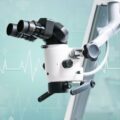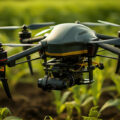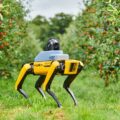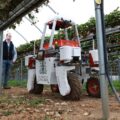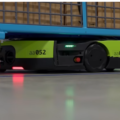Agricultural drones, also known as unmanned aerial vehicles (UAVs), have quickly emerged as a revolutionary tool for farmers in recent years. These high-tech devices are equipped with sensors, cameras, and advanced software that allow farmers to monitor and manage their crops remotely. This technology has the potential to transform the entire agricultural sector by providing farmers with real-time information that can help them make informed decisions and increase the overall efficiency and productivity of their operations.
One of the main benefits of agricultural drones is their ability to quickly and accurately collect data on crop health and growth. This information can be used to identify areas that are susceptible to disease, pests, or other problems, allowing farmers to respond quickly and efficiently. Drones can also be equipped with multispectral cameras that capture images at different wavelengths, providing farmers with a wealth of information about crop vegetation index, chlorophyll content, and other essential parameters.
Another advantage of agricultural drones is their ability to precisely apply fertilizers, pesticides, and other crop treatments. Using GPS technology, drones can be programmed to fly over specific areas of a field to precisely deliver the right amount of treatment exactly where it is needed. This increases the overall efficiency of the treatment process and reduces the risk of over-application, which can harm the environment and increase costs.
Drones can also play a key role in precision agriculture, which involves using technology to optimize crop production and reduce waste. For example, drones can be used to create detailed maps of fields and identify areas that may require additional attention and resources. This information can be used to optimize planting patterns, improve irrigation and nutrient management, and increase overall crop yields.
The use of drones in agriculture also has the potential to improve food security by reducing the need for labor in the field. This can reduce the risk of human error as well as the risk of workplace accidents, which is especially important in areas where the workforce is aging and fewer young people are entering agriculture.
Despite the many benefits of agricultural drones, there are also some challenges. One of the main challenges is the high cost of these devices, which can be a barrier for small farmers and rural communities. In addition, privacy concerns remain, as drones can capture images and data that are not intended for public use. There are also regulatory challenges, as many countries have yet to establish clear rules and regulations for drone use in agriculture.
In short, agricultural drones have the potential to revolutionize the way farmers monitor and manage their crops, providing real-time information that can help them make informed decisions and improve the overall efficiency and productivity of their operations. As technology continues to evolve and the cost of these devices decreases, agricultural drones are likely to become an increasingly important tool for farmers worldwide.

